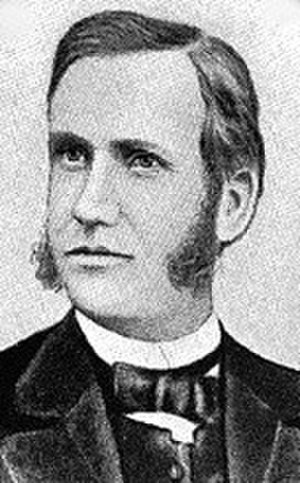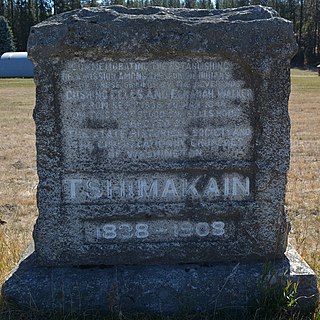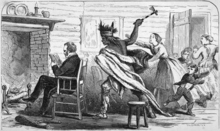
The Cayuse are a Native American tribe in what is now the state of Oregon in the United States. The Cayuse tribe shares a reservation and government in northeastern Oregon with the Umatilla and the Walla Walla tribes as part of the Confederated Tribes of the Umatilla Indian Reservation. The reservation is located near Pendleton, Oregon, at the base of the Blue Mountains.
The Oregon missionaries were pioneers who settled in the Oregon Country of North America starting in the 1830s dedicated to bringing Christianity to local Native Americans. There had been missionary efforts prior to this, such as those sponsored by the Northwest Company with missionaries from the Church of England starting in 1819. The Foreign Mission movement was already 15 years underway by 1820, but it was difficult to find missionaries willing to go to Oregon, as many wanted to go to the east, to India or China. It was not until the 1830s, when a schoolmaster from Connecticut, Hall Jackson Kelley, created his "American Society for the Settlement of the Oregon Country," that more interest and support for Oregon missionaries grew. Around the same time, four Nez Perce arrived in St. Louis in the fall of 1831, with accounts differencing as to if these travelers were asking for "the book of life", an idea used by Protestant missionaries, or if they asked for "Blackrobes", meaning Jesuits, thus Catholic missionaries. Either way this inspired Christian missionaries to travel to the Oregon Territory. Oregon missionaries played a political role, as well as a religious one, as their missions established US political power in an area in which the Hudson's Bay Company, operating under the British government, maintained a political interest in the Oregon country. Such missionaries had an influential impact on the early settlement of the region, establishing institutions that became the foundation of United States settlement of the Pacific Northwest.

Marcus Whitman was an American physician and missionary. He is most well-known for leading American settlers across the Oregon Trail, unsuccessfully attempting to Christianize the Cayuse Indians, and was subsequently killed by the Cayuse Indians in a event known as the 1847 Whitman massacre, over a misunderstanding, resulting in the beginning of the Cayuse war (1847-1855).

The Whitman massacre refers to the killing of American missionaries Marcus and Narcissa Whitman, along with eleven others, on November 29, 1847. They were killed by a small group of Cayuse men who accused Whitman of poisoning 200 Cayuse in his medical care during an outbreak of measles that included the Whitman household. The killings occurred at the Whitman Mission at the junction of the Walla Walla River and Mill Creek in what is now southeastern Washington near Walla Walla. The massacre became a decisive episode in the U.S. settlement of the Pacific Northwest, causing the United States Congress to take action declaring the territorial status of the Oregon Country. The Oregon Territory was established on August 14, 1848, to protect the white settlers.

Celilo Falls was a tribal fishing area on the Columbia River, just east of the Cascade Mountains, on what is today the border between the U.S. states of Oregon and Washington. The name refers to a series of cascades and waterfalls on the river, as well as to the native settlements and trading villages that existed there in various configurations for 15,000 years. Celilo was the oldest continuously inhabited community on the North American continent until 1957, when the falls and nearby settlements were submerged by the construction of The Dalles Dam. In 2019, there were calls by tribal leaders to restore the falls.

Whitman Mission National Historic Site is a United States National Historic Site located just west of Walla Walla, Washington, at the site of the former Whitman Mission at Waiilatpu. On November 29, 1847, Dr. Marcus Whitman, his wife Narcissa Whitman, and 11 others were slain by Native Americans of the Cayuse. The site commemorates the Whitmans, their role in establishing the Oregon Trail, and the challenges encountered when two cultures meet.

Tiloukaikt (d.1850) was a Native American leader of the Cayuse tribe in the northwestern United States. He was involved in the Whitman Massacre and was a primary leader during the subsequent Cayuse War.

Narcissa Prentiss Whitman was an American missionary in the Oregon Country of what would become the state of Washington. On their way to found the Protestant Whitman Mission in 1836 with her husband, Marcus, near modern-day Walla Walla, Washington, she and Eliza Hart Spalding became the first documented European-American women to cross the Rocky Mountains.

Piupiumaksmaks was head chief of the Walla Walla tribe and son to the preceding chief Tumatapum. His name meant Yellow Bird, but it was often mistranslated as Yellow Serpent by Europeans.

General Joel Palmer was an American pioneer of the Oregon Territory in the Pacific Northwest region of North America. He was born in Upper Canada, and spent his early years in New York and Pennsylvania before serving as a member of the Indiana House of Representatives.

The Sager orphans were the children of Henry and Naomi Sager. In April 1844 the Sager family took part in the great westward migration and started their journey along the Oregon Trail. During it, both Henry and Naomi died and left their seven children orphaned. Later adopted by Marcus and Narcissa Whitman, missionaries in what is now Washington, they were orphaned a second time, when both their new parents, as well as brothers John and Francis Sager, were killed during the Whitman massacre in November 1847. About 1860 Catherine, the oldest daughter, wrote a first-hand account of their journey across the plains and their life with the Whitmans. Today it is regarded as one of the most authentic accounts of the American westward migration.
Cornelius Gilliam was a pioneer of the U.S. state of Oregon who was best known as the commander of the volunteer forces against the Cayuse in the Cayuse War. A native of North Carolina, he served in the Black Hawk War and Seminole Wars before settling in Missouri. There he served in the militia against the Mormons, was a county sheriff, and a member of the Missouri State Senate before immigrating to the Oregon Country.
Henry A. G. Lee was a soldier and politician in Oregon Country in the 1840s. A member of Virginia's Lee family, he was part of the Fremont Expedition and commanded troops during the Cayuse War in what became the Oregon Territory. He also was a member of the Oregon Provisional Government and the second editor of the Oregon Spectator.
Dr. Elijah White (1806–1879) was a missionary and agent for the United States government in Oregon Country during the mid-19th century. A trained physician from New York State, he first traveled to Oregon as part of the Methodist Mission in the Willamette Valley. He returned to the region after a falling-out with mission leader Jason Lee as the leader of one of the first large wagon trains across the Oregon Trail and as a sub-Indian agent of the federal government. In Oregon he used his authority to regulate affairs between the Natives and settlers, and even between settlers. White left the region in 1845 as a messenger for the Provisional Government of Oregon to the United States Congress, returning in 1850 before leaving again for California in the early 1860s.
The Wascopam Mission or Dalles Mission was a branch of the Methodist Mission opened at Celilo Falls in 1838. Among the tribes proselytized were members of the Cayuse, Klickitat, Nez Perce, Shasta, Tenino, Walla Wallas, and Wasco-Wishram. In 1847 the mission was closed and later became the site of Fort Dalles.

The Tshimakain Mission started in September 1838, with the arrival of Congregationalist missionaries Cushing and Myra Fairbanks Eells and Elkanah and Mary Richardson Walker to the area along Chamokane Creek at the community of Ford, Washington. Fort Colvile Chief Factor Archibald McDonald recommended the area to Eells and Walker on their first visit to the area.

Cushing Eells was an American Congregational church missionary, farmer and teacher on the Pacific coast of America in what are now the states of Oregon and Washington. His first mission in Washington State was unsuccessful. Eells and his family had to leave after the Native Americans massacred a group of neighboring missionaries. They spent the next fourteen years farming and teaching in Oregon, before returning to Washington, where Eells founded a seminary that later became the Whitman College. Eells continued to teach and preach in Washington for the remainder of his life.
The Walla Walla expeditions were organized during the mid-nineteenth century to enrich the Sahaptian peoples of the Columbian Plateau with cattle purchased in Alta California. Among the first expedition was Walla Walla leader Piupiumaksmaks, Garry of the Spokanes and Cayuse headman Tawatoy. They arrived at New Helvetia in 1844. A confrontation erupted with the son of Piupiumaksmaks, Toayahnu, being killed by an American. A second expedition was organized, returning to New Helvetia in 1846, where two thousand cattle was purchased. When the expedition returned to the Columbian Plateau, members were ill with measles. The disease was consequently spread across the Pacific Northwest and was a major cause of the Whitman massacre.
The history of Walla Walla, Washington begins with the settling of Oregon Country, Fort Nez Percés, the Whitman Mission and Walla Walla County, Washington.
The Cayuse Five were five members of the Cayuse of Oregon who were hanged for murder in 1850 following their attack on a mission settlement. Their names were Clokomas, Isiaasheluckas, Kiamasumkin, Telakite, and Tomahas—note how these names are spelled varies.














